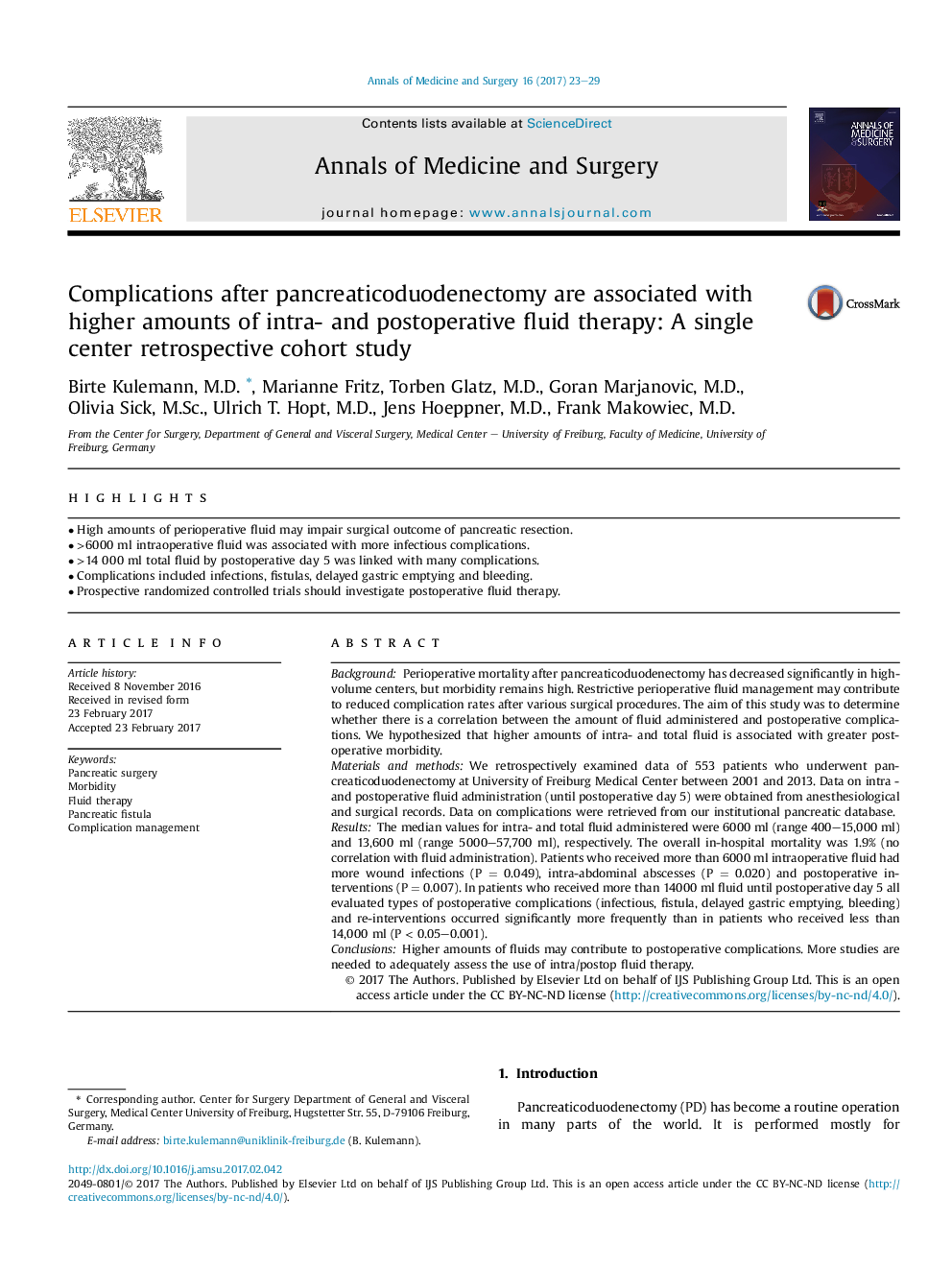| کد مقاله | کد نشریه | سال انتشار | مقاله انگلیسی | نسخه تمام متن |
|---|---|---|---|---|
| 5723089 | 1608911 | 2017 | 7 صفحه PDF | دانلود رایگان |
- High amounts of perioperative fluid may impair surgical outcome of pancreatic resection.
- >6000Â ml intraoperative fluid was associated with more infectious complications.
- >14 000Â ml total fluid by postoperative day 5 was linked with many complications.
- Complications included infections, fistulas, delayed gastric emptying and bleeding.
- Prospective randomized controlled trials should investigate postoperative fluid therapy.
BackgroundPerioperative mortality after pancreaticoduodenectomy has decreased significantly in high-volume centers, but morbidity remains high. Restrictive perioperative fluid management may contribute to reduced complication rates after various surgical procedures. The aim of this study was to determine whether there is a correlation between the amount of fluid administered and postoperative complications. We hypothesized that higher amounts of intra- and total fluid is associated with greater postoperative morbidity.Materials and methodsWe retrospectively examined data of 553 patients who underwent pancreaticoduodenectomy at University of Freiburg Medical Center between 2001 and 2013. Data on intra - and postoperative fluid administration (until postoperative day 5) were obtained from anesthesiological and surgical records. Data on complications were retrieved from our institutional pancreatic database.ResultsThe median values for intra- and total fluid administered were 6000 ml (range 400-15,000 ml) and 13,600 ml (range 5000-57,700 ml), respectively. The overall in-hospital mortality was 1.9% (no correlation with fluid administration). Patients who received more than 6000 ml intraoperative fluid had more wound infections (P = 0.049), intra-abdominal abscesses (P = 0.020) and postoperative interventions (P = 0.007). In patients who received more than 14000 ml fluid until postoperative day 5 all evaluated types of postoperative complications (infectious, fistula, delayed gastric emptying, bleeding) and re-interventions occurred significantly more frequently than in patients who received less than 14,000 ml (P < 0.05-0.001).ConclusionsHigher amounts of fluids may contribute to postoperative complications. More studies are needed to adequately assess the use of intra/postop fluid therapy.
Journal: Annals of Medicine and Surgery - Volume 16, April 2017, Pages 23-29
